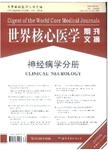同侧偏盲:904例患者的临床-解剖关系
Homonymous hemianopias: Clinical-anato-mic correlations in 904 cases作者机构:Neuroophthalmology Unit Emory Eye Center 1365-B Clifton Road NE Atlanta GA 30322 United States Dr.
出 版 物:《世界核心医学期刊文摘(神经病学分册)》 (Digest of the World Core Medical Journals:Clinical Neurology)
年 卷 期:2006年第2卷第9期
页 面:12-13页
学科分类:1003[医学-口腔医学] 100302[医学-口腔临床医学] 10[医学]
主 题:临床特征 解剖关系 同侧 偏盲 神经功能缺陷 视觉传导通路 视野缺损 人口统计学
摘 要:Objective: To describe the clinical characteristics and clinical-anatomic correlations of homonymous hemianopia (HH). Background: Homonymous hemianopia impairs visual function and frequently precludes driving. Most knowledge of HH is based on relatively few cases with clinical-anatomic correlations. Methods: The authors reviewed medical records of all patients with HH seen in their service between 1989 and 2004. Demographic characteristics, characteristics of visual field defects, causes of visual field defects, neuroradiologic definition of lesion location, and associated neurologic deficits were recorded. Results: A total of 904 HH were found in 852 patients. A total of 340 HH (37.6%) were complete and 564 HH (62.4%) were incomplete. Homonymous quadrantanopia (264 HH, 29%) was the most common type of incomplete HH, followed by homonymous scotomatous defects (116 HH, 13.5%), partial HH (114 HH, 13%), and HH with macular sparing (66 HH, 7%). A total of 407 HH (45.0%) were isolated. Causes of HH included stroke (629 HH, 69.6%), trauma (123, 13.6%), tumor (102, 11.3%), brain surgery (22, 2.4%), demyelination (13, 1.4%), other rare causes (13, 1.4%), and unknown etiology (2, 0.2%). The lesions were most commonly located in the occipital lobes (45%) and the optic radiations (32.2%). Every type of HH, except for unilateral loss of temporal crescent and homonymous sectoranopia, was found in all lesion locations along the retrochiasmal visual pathways. Conclusion: Homonymous hemianopia is usually secondary to stroke, head trauma, and tumors. Although the characteristics of visual field defects can be helpful in lesion location, specific visual field defects do not always indicate specific brain locations.



